Bleeding
Principles of the Trauma Care Response
Bleeding is an obvious injury because it is visible. During the patient assessment, responders should be sure to look for all issues. Addressing bleeding may cause the first aid responder to miss other, more critical problems. If bleeding is the primary problem, responders need to use PPE to protect themselves from bloodborne pathogens.
The following are the American College of Surgeon’s primary principles of the trauma care response:
- A – Alert – Call the emergency response services
- B – Bleeding – Locate the source of the bleeding
- C – Compress – Pressure should be applied to stop the bleeding by:
- Using a clean cloth or gauze to cover the wound and applying pressure with both hands.
- Using a tourniquet.
- Stuffing the wound with a clean cloth and applying pressure with both hands.
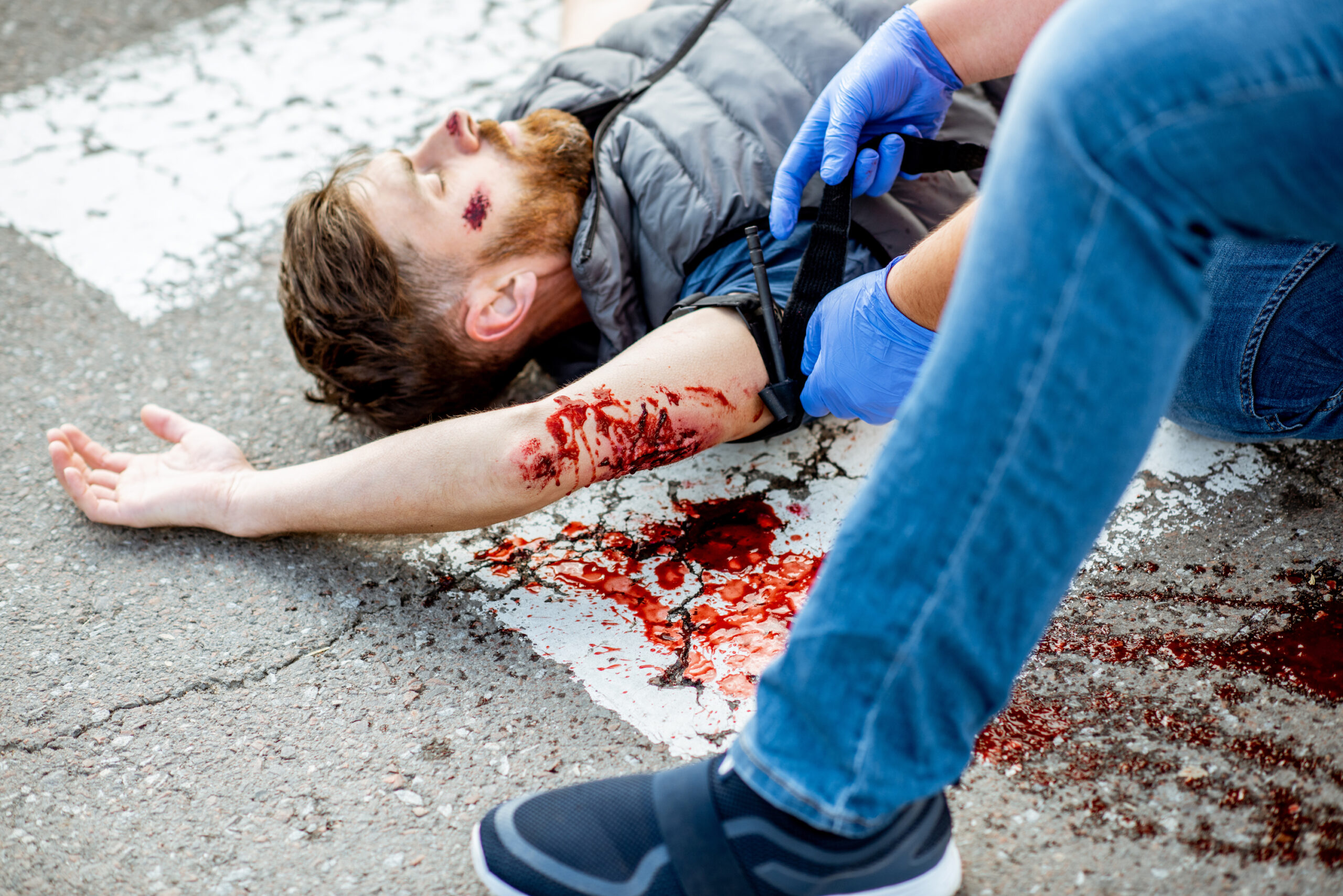
Applying a Tourniquet to Stop the Bleeding
Direct Pressure on the Wound
The following are procedures for responders to perform direct pressure on a wound to control the bleeding:
- Use personal protective equipment (gloves or plastic bags) over both hands.
- If there are multiple bleeding wounds, try to determine which one is the most severe and address that wound first.
- Take a clean cloth (shirt or bandana) and use it to cover the wound. For deep wounds, stuff the cloth or gauze into the wound.
- Apply constant pressure directly on top of the wound with both hands.
- Push down as hard as possible until the bleeding slows or stops.
- Hold pressure until the bleeding is controlled or paramedics arrive.
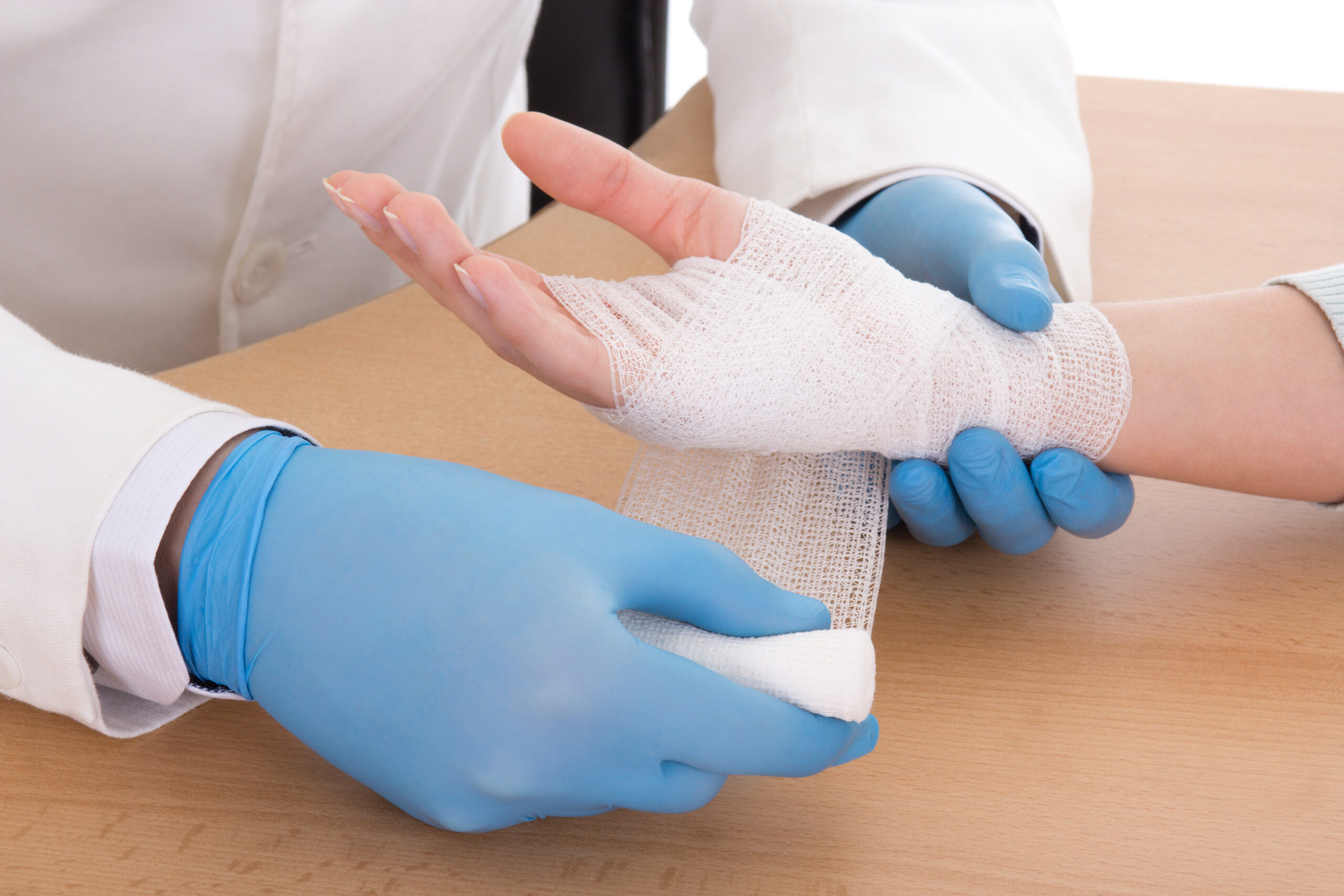
Hand Wrapped in Gauze
Using a Tourniquet
If the responder has a tourniquet or belt, the following are the recommended procedures for applying a tourniquet:
- Wrap the tourniquet around the affected extremity 2 to 3 inches proximal to (above) the wound site. Do not wrap the tourniquet around a joint; go further above it if necessary.
- Pull the free end to ensure that the tourniquet is placed on tightly.
- Tighten the tourniquet just until the bleeding stops.
- Indicate the time when the tourniquet was applied by using a sharpie or a pen.
- Do not release the tourniquet until medically trained personnel arrive.
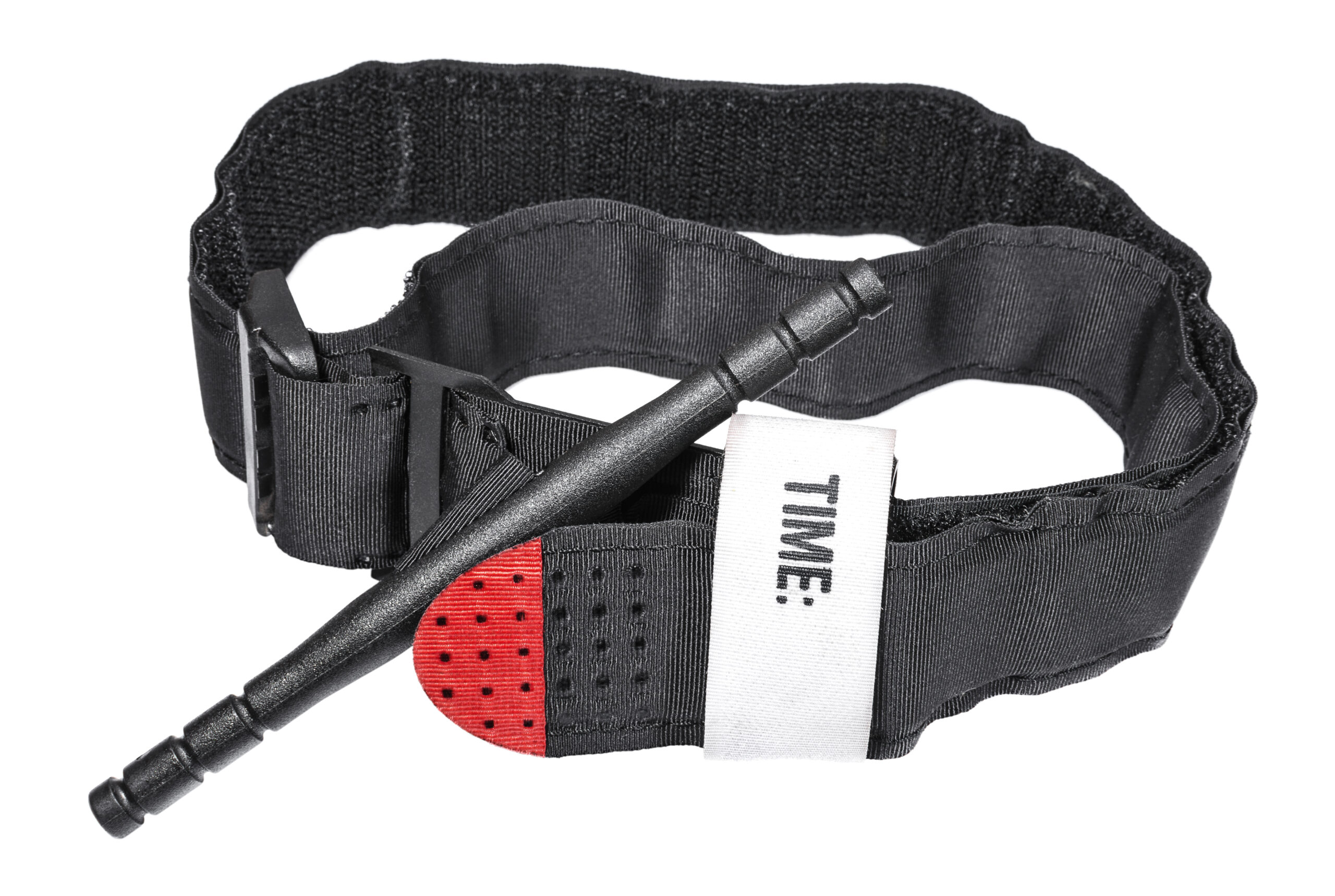
Tourniquet
Miscellaneous Bleeding Injuries
Arterial Injuries
When blood is gushing, spurting, soaking, or pooling, an artery is likely severed. Arterial injuries are life-threatening injuries, and the bleeding must be stopped as soon as possible.
Related Video: Understanding Arterial Bleeding
Nosebleed
If the person has a nosebleed, simply pinching the nose while having them lean forward can help stop the bleeding in about 10 minutes. Responders should tell the person to avoid blowing the nose. If bleeding continues afterward, they must seek emergency treatment.
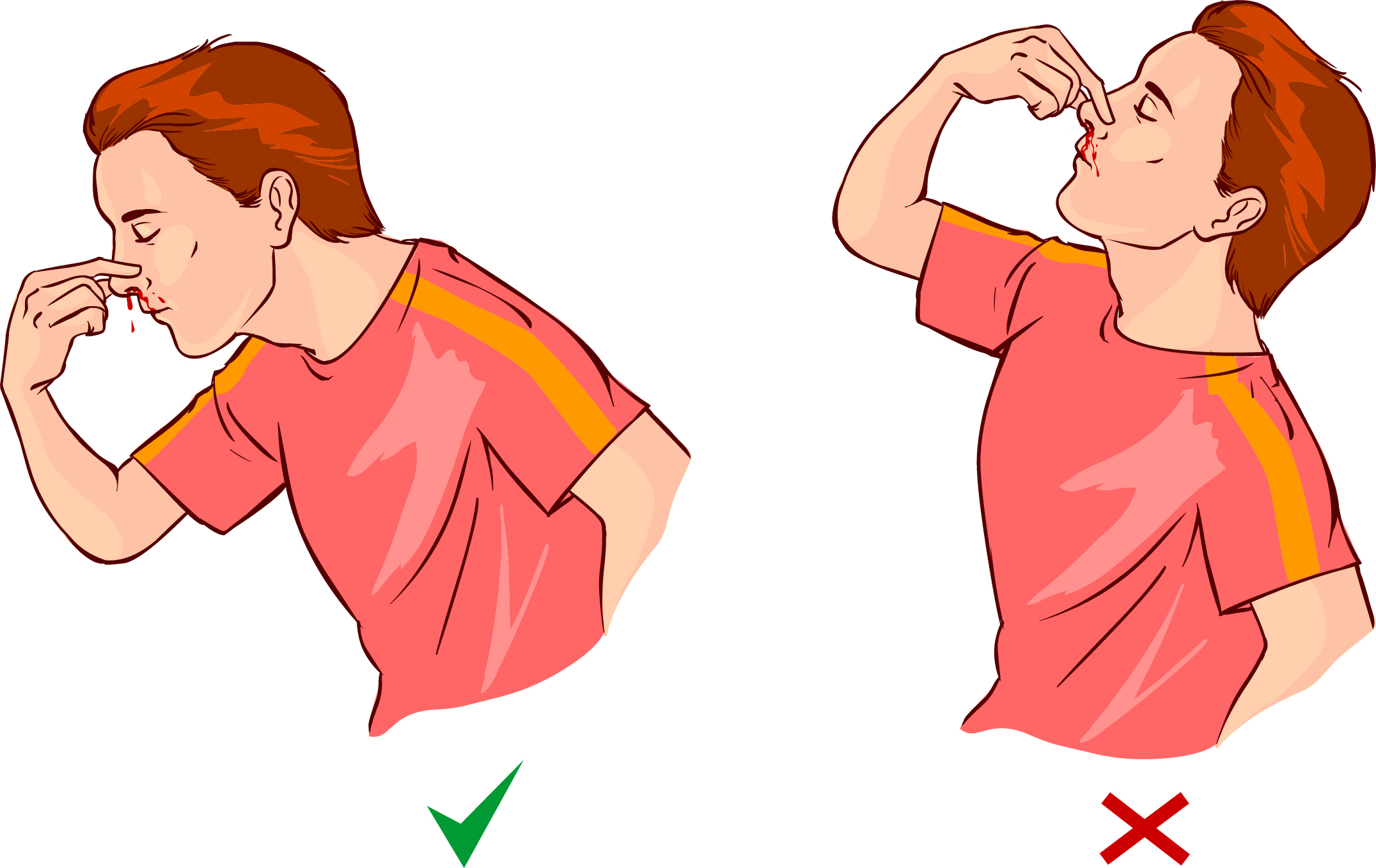
The proper positioning for nosebleeds is to lean forward
Foreign Body Puncture
Some injuries involve a foreign body that has caused a puncture wound. Responders should not remove the foreign body but instead try to apply bandages around the affected area to stabilize it and prevent further injury.
If bleeding is evident, pressure can be applied using a doughnut bandage that surrounds the foreign object. If the foreign body is composed of wood, moisture should not be applied because it will cause the wood to swell and may make removal more difficult.
Eviscerated Wound
An eviscerated wound is an injury in which the abdominal organs are outside the body. If a person has been eviscerated, it is important that responders do not attempt to place the organs back inside the abdominal cavity. Instead, they should cover the exposed organs with a large sterile dressing. If any bleeding is present, direct pressure should be applied to the bleeding site.
When the gauze is drenched with blood, new bandages should be added, and responders continue applying direct pressure to the wound.
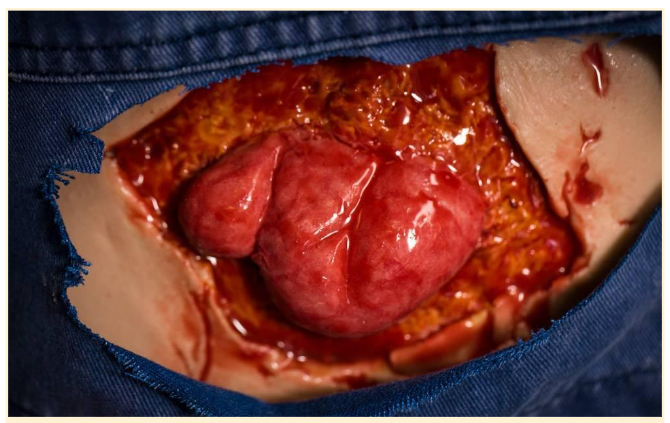
Evisceration.